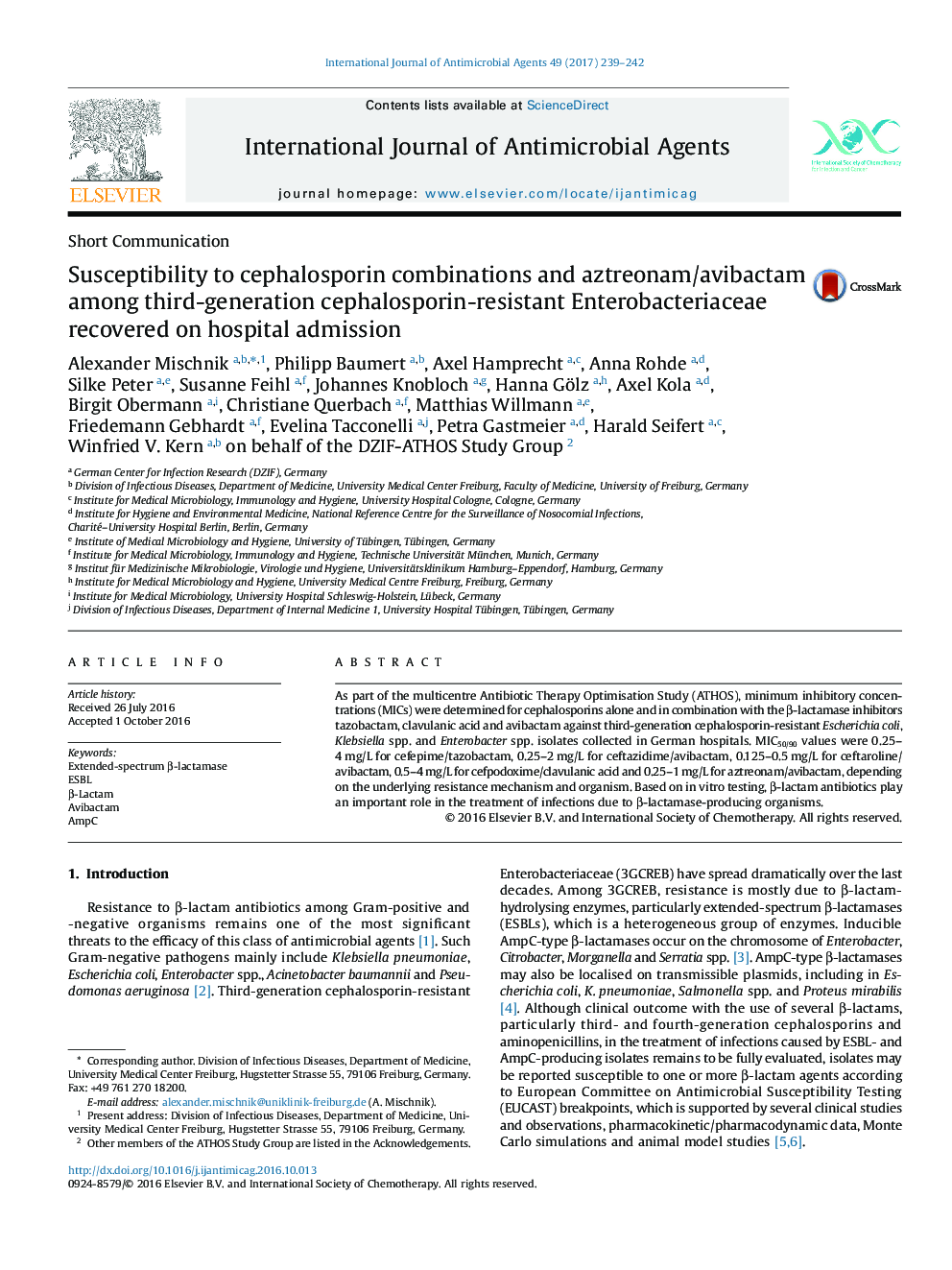| Article ID | Journal | Published Year | Pages | File Type |
|---|---|---|---|---|
| 5666978 | International Journal of Antimicrobial Agents | 2017 | 4 Pages |
â¢Data from largest prevalence study of third-generation cephalosporin-resistant Enterobacteriaceae on hospital admission.â¢Data on β-lactam minimum inhibitory concentration (MIC) distributions of 3GCREB.â¢Susceptibility testing of new and unconventional antimicrobials and combinations.â¢Susceptibility test results were correlated with molecularly characterised underlying resistance mechanisms.
As part of the multicentre Antibiotic Therapy Optimisation Study (ATHOS), minimum inhibitory concentrations (MICs) were determined for cephalosporins alone and in combination with the β-lactamase inhibitors tazobactam, clavulanic acid and avibactam against third-generation cephalosporin-resistant Escherichia coli, Klebsiella spp. and Enterobacter spp. isolates collected in German hospitals. MIC50/90 values were 0.25-4âmg/L for cefepime/tazobactam, 0.25-2âmg/L for ceftazidime/avibactam, 0.125-0.5âmg/L for ceftaroline/avibactam, 0.5-4âmg/L for cefpodoxime/clavulanic acid and 0.25-1âmg/L for aztreonam/avibactam, depending on the underlying resistance mechanism and organism. Based on in vitro testing, β-lactam antibiotics play an important role in the treatment of infections due to β-lactamase-producing organisms.
